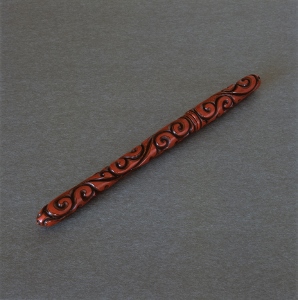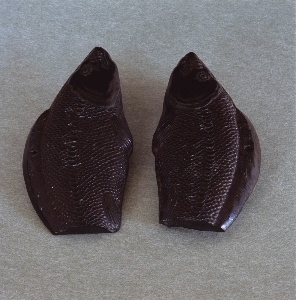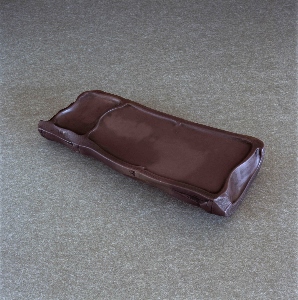INK BRUSH
Red lacquer with pommel scroll designEarly Ming dynasty
Total length: 25.2 cm
This brush has a rather thick handle coated with multiple layers of red, yellow and black lacquer and pommel scroll pattern is carved into the lacquer. A repetitive pommel scroll (known as guri in Japanese) pattern is carved from the brush cap through the handle, with some unconstrained variation at the end of the handle. The slightly constricted center of the handle enables the user to hold the brush comfortably. The deeply carved, powerful expression of the motif retains the atmosphere of a Yuan-dynasty work.




















